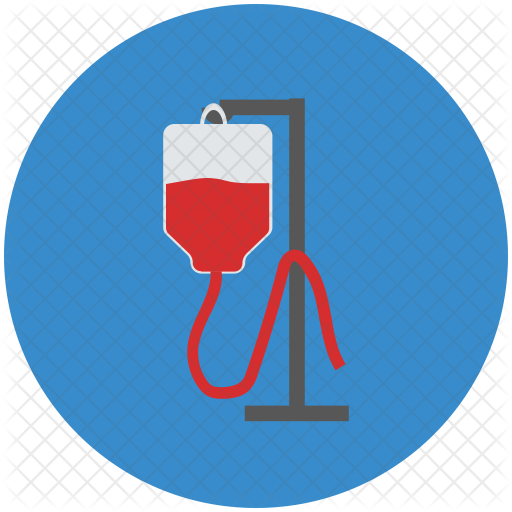MICS CABG
The minimally invasive coronary bypass technique

The MICS CABG procedure is an advanced minimally invasive technique for multi-vessel coronary bypass (CABG). It offers several advantages over the traditional open technique while preserving both safety and quality of open surgery. It helps patients heal faster, recovery quicker without the complications of open surgery.
Introduction
The Coronary Bypass Technique Performed Minimally Invasively Without Cutting Any Bone
How is MICS CABG performed?
MICS CABG or Minimally Invasive Coronary Artery Bypass is also called Minimally Invasive Bypass. Most people commonly refer to this as a “Keyhole Bypass”. This is a novel technique of bypassing blocked blood vessels to the heart that was first described in 2006.
In this technique the entire surgery is performed by entering the chest from a small cut below the left nipple between the ribs without cutting any bones.

The heart is then positioned and stabilised using special tools called an Octopus and Starfish. Medtronic, a medical device company manufactures this in the USA. The bypass of the blocked vessels is then performed using specialised micro instruments specifically designed for this. This is very different from open surgery where the breast bone or sternum is cut.
MICS CABG requires greater skill and training compared to open surgery and most surgeons are not able to perform this technique mostly due to lack of training.
We perform MICS CABG as a routine procedure making us one of the most sought after center for training and observation. Till date more than 200 surgeons from across the globe have visited us for educational and training purposes. Dr Sathyaki Nambala at Apollo Hospital, Bengaluru has one of the largest experience in the world in MICS CABG with over 2300 procedures performed in one center.
Largest
Succesful Procedures
Shortest
Hours
Rapid
Days
How does Open CABG differ from MICS CABG?

Open CABG, also known as conventional coronary artery bypass grafting, is conducted using a different approach than MICS CABG. During open CABG, a surgical incision is made in the chest, allowing access to the heart. This traditional method involves cutting the breastbone (sternotomy), which leads to an extended period for recovery and potential chest trauma. However, open CABG remains a trusted procedure in treating coronary artery disease.

Note the differences
Breast Bone is Cut (Sternotomy)
The heart is reached by cutting open the breast bone or sternum with an electric saw. This is like a fracture and fractured bone takes several months to heal. Drawbacks include pain, discomfort, blood loss, bone infection and prolonged recovery. Some complications may be life threatening.
Entire heart Exposed and handled
The entire chest cavity from the cut surface of the bone to the heart and great vessels are fully exposed while being handled during open surgery. The risk of infection and injury is significant in this approach.
Use of retractors and stabilisers
The cut sternum that has beed spit is kept apart by a retractor or spreader. By spreading by the retractor causes joint and cartilage injury along the entire length where the ribs are attached both in the front of the chest as well as the back at the spinal attachments. Stabilisers are used for keeping the heart still while doing the bypass.
So Many Advantages With MICS CABG
This novel technique is well established and in skilled hands offers immense benefits compared to open surgery. Many of the benefits cannot be measured as is with the psychological impact of a major surgery.
Why should you choose the MICS CABG procedure?
Rapid Recovery
No Blood Transfusion
Ideal For Older Patients
Highly Accurate
Robotic Assistance
No Infection
No Bones Are Cut
Shorter Hospital Stay
Experience the Best
How safe is MICS CABG?
MICS CABG is an established operation across the globe and is performed routinely in some of the most well known centres for heart surgery. It was first described in 2006 and since then several thousands have been performed in specialised centres.
There are several misconceptions spread by poorly informed doctors about the MICS CABG operation. We have been performing MICS CABG since 2012 and we have pioneered several techniques in this operation. With more than a decade of experience our risk rates fall between 0.4 to 0.7%. Risk rates for majority of patients is at 0.4% which is significantly better than open surgery.
MICS CABG or minimally invasive CABG is more difficult to perform. It’s definitely unsafe for an untrained surgeon to perform this operation.
%
MICS CABG Succes Rate Dr Sathyaki Nambala
Is the long term results of MICS CABG equal to Open surgery?
Long term results require patients to be followed for 10 years. There are currently no studies documenting this. Studies like this require huge resources for collecting and maintaining data. Results are usually generalised and unlikely to reflect actual outcomes. This is because results from specialised centres are significantly better than smaller inexperienced hospitals. Our own experience suggests an equally good outcome with a better quality of life in patients undergoing MICS CABG at Apollo Hospital, Bengaluru. However, it should be noted that we are the most experienced in the world in this procedure and we have several quality control measures to ensure better outcomes and we have been doing this operation for over 12 years.

Can all vessels be bypassed in a MICS CABG?
Absolutely! Inexperienced surgeons and physicians frequently tell patients that right sided vessels cannot be bypassed in MICS CABG. This is an absolute lie.
It is routine for us to do a triple bypass including the right side. Approximately 73% of patients receive grafts to all vessels on the heart including the right in our experience.
%
Patients receiving a right sided graft
Remaining 27% did not require a right sided graft as there were no significant blocks

- Need for Blood transfusion
- Conversion to Open
- Need for Cardiopulmonary Bypass
- Deep Wound Infection
How frequent are complications in MICS CABG?
Complications in MICS CABG are very rare and similar to open surgery. Note that complications depend on the surgeons experience and skill as well as the team/hospital. Complications also depend on the patient and his pre surgical risk factors. For example an obese patient with uncontrolled diabetes, early renal failure who is inactive has a higher risk compared to someone who is active and non diabetic. Complications include death, stroke, risk of infection, conversion to open surgery and post surgery heart attack due to graft closure. All these risks can be significantly reduced with experience and use of technology. With our experience of over 13 years the risks are considerably low and nearing zero.
The risk of each complication is highlighted on the left and this is specific to Dr Sathyaki Nambala at Apollo Hospital, Bannerghatta Road, Bengaluru.
%
Freedom from Blood Transfusions
Conversion to Open
2300 operations, only 3 conversions in the first 100 and none thereafter. Means the risk of converting to open is remote.
%
Need for Cardiopulmonary Bypass
1 out 100 patients may need the support of heart lung machine to complete the operation
%
Risk of Infection
Infections are rare. Usually seen in uncontrolled diabetics or in obese. No deep infections.
How do we confirm your grafts are working after the operation?
The team at Apollo Hospital Bannerghatta Road takes pride in the quality of work performed and each graft performed is analysed on the operation table. This unbiased assessment gives enormous satisfaction to the surgical team and adds significant safety benefits as well as better long term outcomes to patients. You can be assured that the bypasses performed were working when we left the operation theatre. This does come with an added cost but tis worth that in gold. We are unique in this and it means we take great pride in doing quality work. The patients family is given a printout of our assessment immediately after the operation. Ask for one if you did not receive it!
We use the MiraQ system for graft flow measurement in every patient. This means that we are unbiased in our graft quality assessment and our patients get the best outcomes.
Each graft is then imaged to check if the anastomosis is open and flows are normal. This is a highly sophisticated technique to assess graft quality and ensure patient safety and outcomes are excellent.

Robotic CABG: What are the advantages?
A robotic CABG uses the help of a surgical robot to assist in the operation. The robot is mostly used for harvesting the two internal mammary arteries from the right and left side of the chest. These arteries from the chest are then used to do bypasses on the heart. The advantages of using the robot are basically to make it easier for the surgeon to do the operation. This is referred to as a robotically assisted MICS CABG because the bypasses are performed exactly like described above. At Apollo Hospital, Bengaluru, Dr Sathyaki Nambala also performs a fully robotic operation where in 1 or 2 vessels are bypassed entirely with the robot without cutting the chest. This is called a robotic CABG or TECAB.

Quick Links
MICS CABG vs Open CABG: What is the difference?
How do I know the grafts are working?
What is the cost of a MICS CABG procedure?
The cost of a MICS CABG procedure is roughly 30% more than an open procedure. This is because of the additional cost of equipment. Complex procedures may cost more when additional support is required eg: unstable patients, very old or diabetic patients requiring longer stay in hospital or ICU etc. Use of robot for a robotic CABG will cost even more.

FAQ
Take Your Surgical Experience Beyond The Ordinary
Experience the extraordinary with MICS CABG. As leaders in minimally invasive heart surgery, we offer a groundbreaking technique that surpasses traditional open surgery. MICS CABG is ideal for patients of all ages. Our advanced tools and robotic assistance ensure highly accurate procedures, while the elimination of bone cutting allows for a swift and smooth recovery. Say goodbye to lengthy hospital stays and infections, as MICS CABG boasts shorter hospitalization and a 100% reduction in deep infection rates. Choose the best for your heart, choose MICS CABG.
Safety & Efficacy
Diet & Diabetes
Activity & Exercise
Healing & Recovery
Portfolio
Recent Work
People from different backgrounds choose minimally invasive CABG (MICS CABG) for varying needs. While some choose the procedure for a faster and less painful recovery, others choose it because they are too old to tolerate a major open surgery or because they want to return to work with the least amount of disruption. Whatever the reason, MICS CABG is a compelling choice for anyone who needs a coronary bypass. Below are a few of our patient stories that we found interesting.
1. Who needs CABG?
2. Is minimally invasive surgery safe?
3. Can CABG be done minimally invasive?
Yes. CABG can be performed minimally invasively through a small incision without cutting any bone, using specialized surgical instruments. This is called MICS CABG. Our experience with this technique is the largest in the world with over 2000 procedures done so far. A robot can also be used to assist in some cases.
4. How long does pain last after CABG?
The pain of surgery is subjective. Typically, the pain lasts for 1 to 2 months after open CABG. More than physical pain, it’s the psychological trauma of undergoing an invasive procedure that affects patients. After minimally invasive CABG or MICS CABG pain usually disappears after 3 to 5 days.
5. What is the recovery time after MICS CABG?
The recovery time after MICS CABG is usually 1 week. However, recovery time can be longer if a patient is sick or unfit prior to the surgery. Patients who are active, with preserved heart function, well controlled diabetes and no other additoinal risk factors (eg: obesity, kidney failure, stroke) will recover faster.

Your doctor can guide you regarding the procedure that’s optimal for you and everything you need to make a quick recovery. Recovery can vary depending on your health status and your pre surgery fitness levels.
Physician Evaluation
Physician evaluation for diabetes control, thyroid disease, lung disease and other pre existing conditions help optimise surgical results by modifying risk factors.
Health Plans
Our insurance cell will assess your insurance plan and guide you on what you are eligible for. We should be able to talk to your insurance representative for any queries that need resolution.
Home Care
If you are elderly or do not have adequate support at home, it’s possible to have a full-time home nurse or a nurse who visits at specific times of the day. This can aid in recovery and allow monitoring. It helps in early identification of complications and prevents life threatening events from occurring.
Physical Therapy
All patients are provided physiotherapy in hospital to aid faster recovery. Patients are encouraged to continue this at home. At home physiotherapy can also be provided for patients who need longer rehab.
Laboratory & Diagnostics
Available in hospital as part of routine evaluation. Sample collections can also be done at home for continued monitoring when required.
Appointments
How It Works
Chat With A Surgeon
Discuss your condition and its appropriate treatment with the surgeon
Procedure Selection
Choose the procedure that’s appropriate for you. Not all patients are suitable for MICS CABG surgery
Plan Procedure
Choose a suitable date for the surgery and plan discharge and follow ups
Get In Touch
Let’s Work Together!
Phone
Address
Bannerghatta Road
Bangalore 560076











